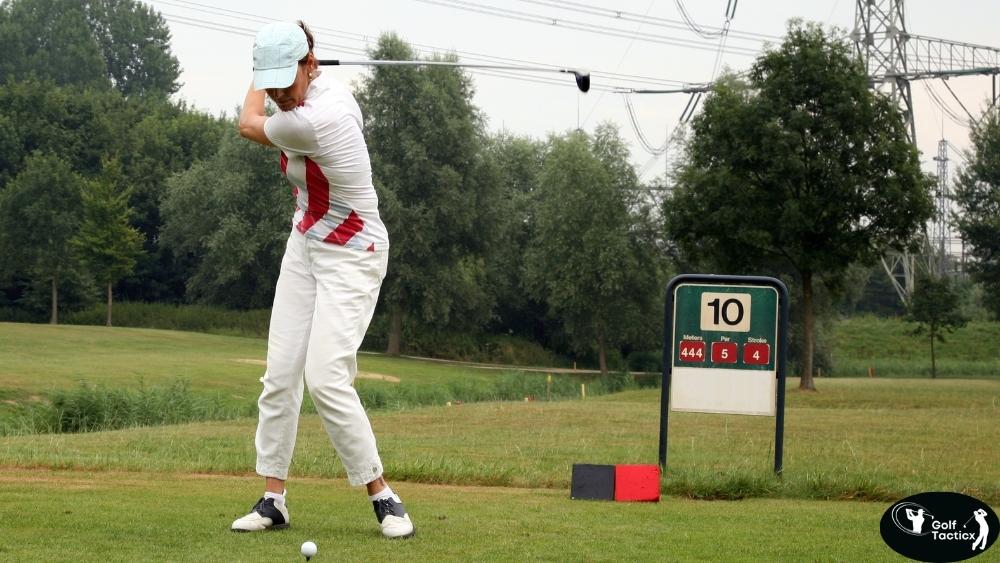In our previous posts, we’ve explored How to hit a punch shot to escape trees or low obstacles? Today, we’re focusing on fundamental short-game drills that can significantly enhance your skills around the greens. Mastering these drills is essential for lowering your scores and boosting your confidence.
In golf, no matter how well you hit the fairways or greens, there will always be moments where you’re faced with less-than-ideal lies. One of the most challenging situations can be playing from divots and uneven lies. These situations can lead to frustration, but with the right knowledge and approach, they don’t have to ruin your game. In this article, we’ll share some practical Tips for Playing from Divots and Uneven Lies that will help you adapt to these tricky conditions and improve your performance on the course.
Understanding Divots and Uneven Lies
Before diving into the tips, it’s essential to understand what divots and uneven lies are and how they can impact your shot.
- Divots: A divot occurs when the clubface makes contact with the turf, often leaving a chunk of grass or turf behind. This can happen on the fairway, tee box, or even in the rough. Playing from a divot typically makes the ball sit lower, and the grass surrounding it can affect how cleanly you strike the ball.
- Uneven Lies: An uneven lie occurs when the ground you’re standing on isn’t flat. This can happen on sloped ground, in bunkers, or on hilly terrain. The ball may be above or below your feet, making it difficult to maintain balance and strike the ball properly.
While both divots and uneven lies present challenges, knowing how to approach these situations will help you minimize the negative effects and make more accurate shots.
Tips for Playing from Divots and Uneven Lies: General Principles
Regardless of the type of uneven lie or divot you’re faced with, there are a few universal tips that can make a significant difference in how you play from these challenging situations:
Focus on Balance and Stability
Balance is one of the most important aspects of hitting a good shot from a divot or uneven lie. A poor stance will affect your ability to strike the ball cleanly and can lead to mishits. Take a moment to adjust your posture, widen your stance slightly to maintain stability, and ensure that your weight is evenly distributed. The better your balance, the more controlled your swing will be, even when facing these tricky conditions.
Stay Calm and Composed
It’s easy to get frustrated when faced with divots or uneven lies, but staying calm is crucial. These situations can lead to errant shots, especially if you try to overcompensate or rush your swing. By staying composed and focusing on executing a smooth swing, you’ll have a much better chance of hitting a good shot, even if the lie is less than ideal.
Assess the Lie Before Making a Shot
Take a moment to carefully assess the lie before you swing. Look at the position of the ball, the type of grass, and the angle of the slope (if applicable). Understanding the lie will help you adjust your stance and swing accordingly. For instance, if the ball is in a deep divot, you may need to adjust your swing path to avoid hitting the ground before the ball.
Use the Right Club
Sometimes, adjusting to a divot or uneven lie requires selecting a different club than you would normally choose. For example, when hitting from a divot in the fairway, you might opt for a club with a wider sole to help prevent the club from digging too deeply into the turf. Similarly, if you’re on an uneven lie, you may need to choose a club with more loft to help get the ball in the air.
Commit to the Shot
Confidence is key when playing from divots and uneven lies. If you’re unsure about how to approach the shot, it’s easy to second-guess yourself. However, the best way to handle these situations is to commit to the shot with full confidence. Trust your skills, adjust as needed, and execute the shot with a positive attitude.
Tips for Playing from Divots and Uneven Lies on the Fairway
The fairway is typically the most forgiving part of the course, but playing from a divot or uneven lie here still requires some adjustments. Here are specific Tips for Playing from Divots and Uneven Lies on the fairway:
Fairway Divots: Open the Clubface When you find yourself hitting from a divot on the fairway, the ball will likely be positioned lower in the grass. This means that you will have to work harder to make solid contact. A good tip is to slightly open the clubface. This will help you lift the ball out of the divot and achieve a clean strike, especially if the divot is deep or the turf is dense. Be sure to follow through and keep the swing smooth, so the ball travels accurately toward your target.
Ball Below Your Feet: Favor a Shorter Club When the ball is below your feet on an uneven lie in the fairway, you’ll need to adjust your swing to accommodate the slope. One effective way to deal with this lie is to use a shorter club. This helps you avoid over-swinging and provides more control over your shot. Additionally, focus on swinging with a slightly steeper path to ensure solid contact with the ball.
Ball Above Your Feet: Keep Your Swing On Plane Conversely, when the ball is above your feet, it can make it harder to make consistent contact. The key here is to adjust your posture slightly by bending your knees and leaning forward into the slope. Ensure that your swing stays on plane, and avoid overswinging, as it can lead to hitting the ball too thin or miss-hitting. Make sure your balance is maintained throughout the shot to avoid pushing the ball too far right or left.
Tips for Playing from Divots and Uneven Lies in the Rough
Playing from the rough often requires more attention to detail. The longer grass can grab the clubface, making it difficult to strike the ball cleanly. Here are a few Tips for Playing from Divots and Uneven Lies when you find yourself in the rough:
Dealing with a Divot in the Rough: Go for a Steeper Angle If you’re hitting from a divot in the rough, the grass will make it even more challenging to make solid contact. A steeper angle of attack is often recommended. By approaching the ball at a sharper angle, you’ll help cut through the grass and reach the ball with more precision. Avoid trying to lift the ball too much, as this can lead to poor results in thick grass.
Uneven Lies in the Rough: Adjust Your Swing Path In the rough, an uneven lie can make things even more difficult, as the thicker grass can change the trajectory of the shot. If the ball is above your feet, you may want to swing slightly more upright. If the ball is below your feet, an inside path will help you avoid catching too much grass and making a weak shot.
Use a More Lofted Club for Better Control When playing from the rough or an uneven lie, it’s often beneficial to use a more lofted club, such as a 7-iron or 9-iron. This provides better control and helps to lift the ball into the air more easily. The additional loft will help you navigate through the thick grass, making it easier to strike the ball cleanly.
Tips for Playing from Divots and Uneven Lies in Bunkers
Though bunker shots are often challenging on their own, playing from a divot or uneven lie inside a bunker adds another layer of complexity. Here are some Tips for Playing from Divots and Uneven Lies in bunkers:
Adjust Your Stance: Maintain Balance When hitting from a divot or uneven lie in a bunker, it’s important to adjust your stance to maintain balance. Ensure that your feet are firmly planted in the sand, and try to avoid digging in too much, as this can throw off your balance. A steady base will allow for a more consistent shot, helping you to get under the ball and out of the bunker.
Use a Higher Lofted Sand Wedge In most cases, a higher lofted sand wedge will help you play from a divot or uneven lie in a bunker. The extra loft allows for more control and can help you lift the ball more effectively. When using a sand wedge, focus on swinging with a clean follow-through, and don’t try to scoop the ball.
Aim for the Center of the Ball In a bunker, it’s often tempting to aim for the bottom of the ball, but the best approach is to aim for the center of the ball. This ensures you make clean contact, even if the ball is resting in a divot or on uneven sand. With a solid strike, you’ll improve your chances of getting the ball up and out of the bunker.
Conclusion
Learning how to play from divots and uneven lies is an essential skill for any golfer. With the right technique and mindset, you can minimize the negative effects of these challenging conditions and make better shots. By focusing on balance, using the appropriate club, and adapting your swing to the situation, you’ll improve your ability to handle divots and uneven lies. Remember, the key to success is practice, patience, and confidence in your skills.
With these Tips for Playing from Divots and Uneven Lies, you can approach these tricky situations with the knowledge and tools needed to maintain control over your game. Whether you’re on the fairway, in the rough, or in the bunker, these adjustments will help you make more accurate shots and navigate through these obstacles with confidence. Keep practicing, and you’ll soon see improvements in your ability to handle even the toughest lies on the course!
In our next post, we’ll dive into choosing the right club for each shot, helping you make smarter decisions on the course. Stay tuned!
















Leave a Reply